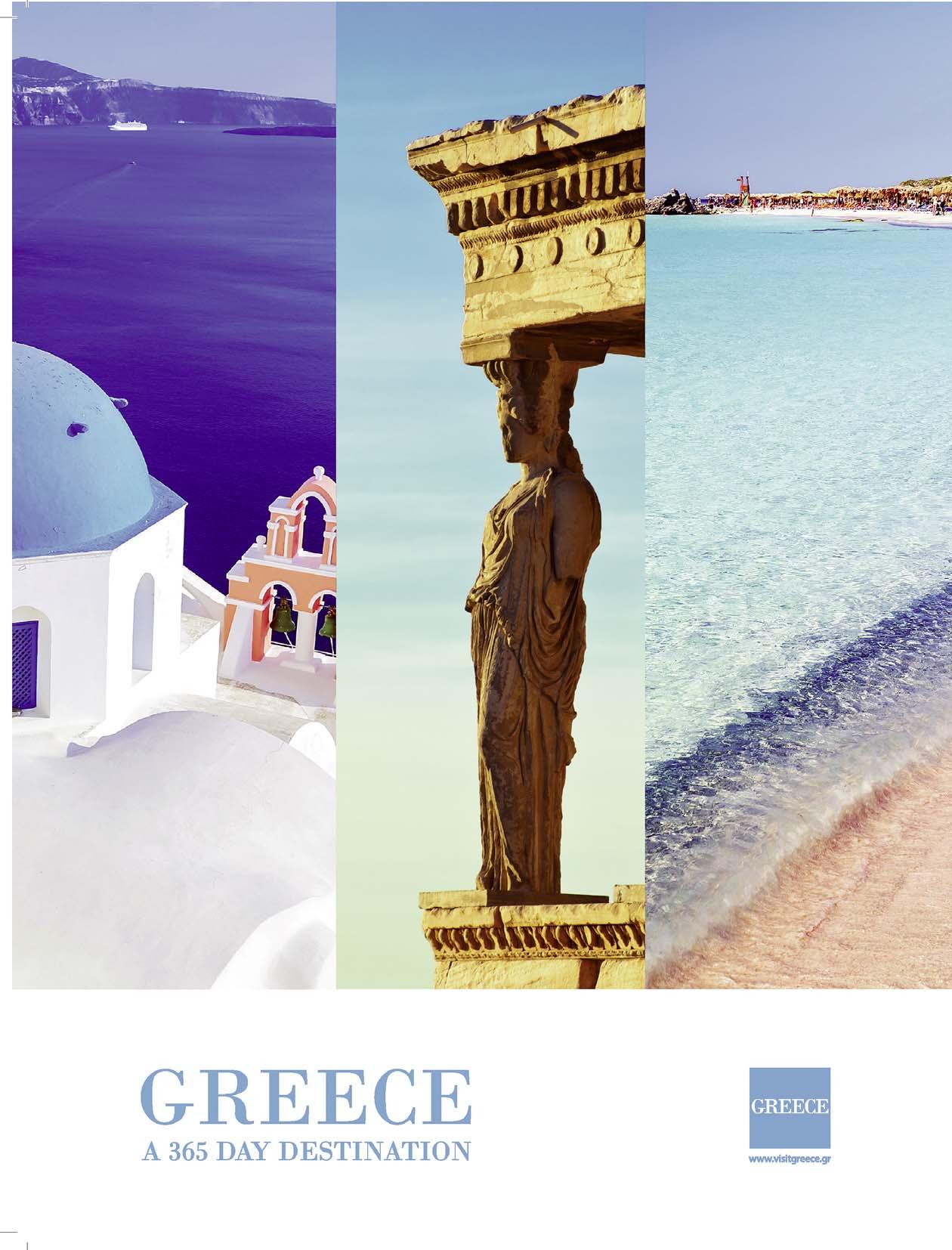
13 minute read
Muscat, Oman 62 Hong Kong
Chinese New Year in Hong Kong! What a wonderful time to visit this dynamic world-class city that rises so dramatically on the northern shores of the South China Sea! However, this was going be much more than just another trip to yet another exotic foreign destination. For me, this would be a long-anticipated voyage to explore one of my many far-flung and multi-hued ethic roots!
A Chinese Grandfather
Advertisement
My maternal grandfather was born to Chinese indentured workers.
Following the Britain's abolition of slavery in 1833, Cantonese peasant farmers were taken halfway around the world to replace the freed slaves on the sugar plantations in what was then British Guiana, Britain's only South American colony, sometime back in the mid-to-late 1800s.
I never knew my Chinese great grandparents, but growing up 'half-Chinese', I always wondered what it would be like to stroll down streets where almost everyone was Asian.
Now at last, I was about to find out on my brief but incredibly intriguing seven-day sojourn in Hong Kong! One Country, Two Systems
Hong Kong would prove to be the ideal place to begin my search for my long-lost 'Chinese' heritage. Like Guyana where I was born, Hong Kong had also been a British colony.
On July 1, 1997, Britain ceded Hong Kong to China, but much of the territory's previous way of life as a British possession was guaranteed under the "One Country, Two Systems" agreement, signed by the governments of the UK and the People's Republic of China.
For today's Western visitor, this means that English continues to be widely understood and spoken in Hong Kong, but don't be fooled by this.
Centuries-old Chinese traditions, superstitions, religious fervour, clan affiliation, ancestral veneration and respect for one's elders are still strongly adhered to by even the most chic and worldly of young Hongkongers!
by Greg James
Gracious Beginning
The inimitable charm of the Chinese swept me away the minute I got in line at the for my late-night Cathay Pacific flight from Toronto to Hong Kong.
Graceful, smiling, female attendants, wearing cheongsams (traditional Chinese close-fitting long silk dresses) and stiletto heels, immediately came up to greet me.
Taking note of my six-foot height, they hastened to assure me in perfect English that I would have a seat with plenty of legroom for the 14hour-plus, non-stop flight to Hong Kong!
Lay of the Land
Using Hong Kong's surprisingly unclogged network of super highways, bridges and tunnels, it was just a short ride to the Harbour Plaza Metropolis Hotel on Kowloon’s waterfront.
Until my visit, I did not realize that the Special Administrative Region of Hong Kong consists of the Island of Hong Kong; Lantau Island; Kowloon City, located on the north bank of Hong Kong's natural Victoria Harbour; and the New Territories, which extend northward from Kowloon to the border of the Mainland Chinese Province of Guangdong (often referred to in English as Canton). part of its region for a total land area of 1,108 km2 (427 square miles). But with its burgeoning population of just over 7 million, Hong Kong is one of the most densely populated areas in the world.
Feng Shui Aesthetics
The Bank of China building, though not the tallest, is still one of Hong Kong's most recognizable landmarks. However, we discovered that it sparked lots of controversy when it was completed in 1990.
Many thought that it did not conform to Feng Shui, the ancient Chinese guiding principle of positive aesthetics. A Market For Every Reason
After disembarking on Hong Kong Island, we made our way through the forest of ultramodern high-rise office buildings to some of the most interesting urban side streets that I have ever had the good fortune to stroll.
On our wonderful walk through the Graham Street Wet Market, the Dried Seafood Street, the Herbal Medicine Street and the Ginseng Street, the sights, smells and sounds of what I envisioned the Orient to be all about came vividly to life.The narrow, crowded and often slightly inclined side streets were a joy to explore. Stalls selling every imaginable type of fresh and dried fish and seafood competed with those offering farm-fresh vegetables, fruits and greens.
Thousand-year-old eggs were available next to a mind-blowing variety of teas and herbs. Dried Ginseng roots and other remedies for promoting one's health and curing ailments were yours for the asking.
Because this was the week preceding Chinese New Year, many of the stalls offered multi-
coloured blossoms; exotic miniature fruit-bearing trees; candies in bright, shinny wrappers; and a wild assortment of decorations for celebrating the arrival of the Year of the Ox.
Bright red underwear (for women and men) was also prominently displayed! As I discovered that day, the 'couleur du jour' for Chinese New Year is definitely red!
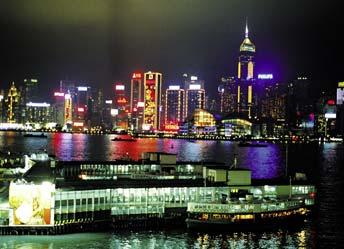
Dim Sum par excellence!
Lunch at Cuisine Cuisine was a very elegant affair.
Along with the delectable dim sum tidbits of this top-rated restaurant, I tried my first thousand-year-old egg, which are only preserved for about 100 days!
Colourful Wan Chai
After lunch, we took a leisurely walk through Hong Kong's colourful Wan Chai District, known for its lively nightlife, luxury apartments, swanky hotels, shopping malls and modern office towers.
Riding the Ding-Ding
The most memorable part of our afternoon Wan Chai promenade was a ride on one the city's double-decker tramways.
The tramway system on Hong Kong Island dates back to 1904. Today, its fleet of 163 tramcars carry a daily average of 230,000 passengers on the six extensive tramway routes. Not Just a Flower Market
The Chinese New Year Flower Market held in Victoria Park is an unforgettable experience. This annual festive event held on the day before New Year's Eve is jam-packed with people, young and old, who flock to the market to get their lastminute New Year's shopping done. Hiking Enthusiast’s Dream
For anyone who loves the outdoors this is an experience not to be missed. The Sai Kung peninsula is a pristine area of Hong Kong's New Territories.
We only did a part of the popular 100 km MacLehose Trail, but at our highest point we had a wonderful bird's-eye view of the coast of the Sai Kung, including its fabled coves and sandy beaches.
How Fresh is Fresh?
After our exhilarating hike, we took a refreshing boat ride and a short bus ride to the seaside town of Sai Kung where local fishermen in small multi-coloured boats moored alongside the docks offered an assortment of newly caught seafood, some of which I could not readily identify.
And just offshore, sea birds hunting for their supper dove gracefully down into the placid sea to snap up their own well-earned fresh catch. Seafood Feast
An extraordinary New Year's seafood feast awaited us at one of the many restaurants that lined Sai Kung's animated waterfront.
Outside each establishment, there were stacks of huge glass tanks containing live fish and other seafood. The idea was to make your choices before entering the restaurant.
Happily, our guide Andy was more familiar with our restaurant's exotic live offerings and in about half an hour his selection became a banLate-night Shopping
If you name just one activity that everyone who visits Hong Kong does it has to be shopping. Some elect to go bargain hunting on Kowloon's Temple Street.
Others may prefer browsing through the scores of high-end boutiques that line Nathan Road where you can find genuine designer clothing at one-third of the price you would pay in Canada. And the well-stocked shops open till 11 pm every night!
New Year’s Lion
The first order of New Year's Day in Hong Kong is to witness a Lion Dance, which promises its spectators good luck for the coming year. The lion also drives out evil spirits where he performs.
Boys as young as six years old are trained to perform this intricate acrobatic dance with one performer manipulating the lion's head and the other its body. Time to Pray
On my visit to the Wong Tai Sin Temple, a traditional Taoist temple established just north of Kowloon in 1921, there were crowds of young and old worshippers lined up for blocks to get in. Taste of The Golden Age
Located in the fashionable Tsim Sha Tsui District of Kowloon, the T'ang Court justly deserves its two Michelin stars.
Unfortunately, we could not linger here after our splendid meal, as we were on our way to the world's happiest party.
Lantau Island Outing
Lantau Island, which lies west of Hong Kong Island, is sparsely populated.
However, northwestern Lantau is now experiencing rapid population growth in its newly established towns due to their proximity to the manmade island where Hong Kong's International Airport now sits. Fishermen’s Domain
One aspect of Lantau Island that happily defies change is the historic village of Tai O, home to the Tanka people who built their houses on stilts above the tidal flats for generations.
We strolled through the town's market street past several stalls offering souvenirs made from the region's beautiful seashells. Other street venders displayed enormous fresh and dried fish and other bounty from the sea in their tiny stalls.
Misty Buddha
Our second stop on Lantau Island was to see the impressive Tian Tan Buddha, said to be the world's tallest outdoor bronze seated Buddha.
As we climbed up the shrine's 286 stone steps, we realised that a persistent heavy mist would somewhat obscure our view of the Buddha.
Though we were disappointed at not seeing the entire 34-metre-tall (110 ft) Buddha, the mist actually added a mysterious and almost mystic aura to this monumental and highly revered religious site.
We made a brief visit on the inside of the Buddha where we encountered walls displaying
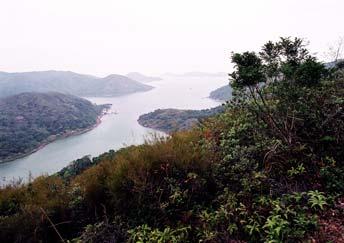



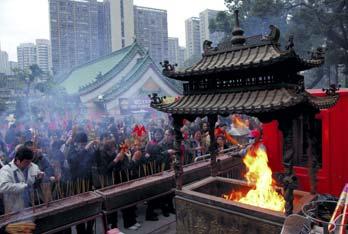
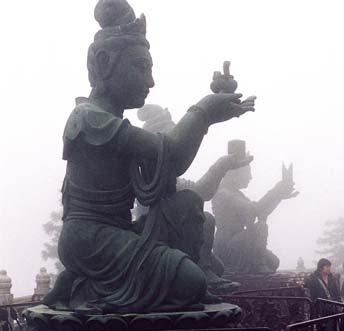
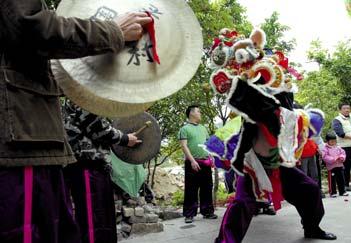

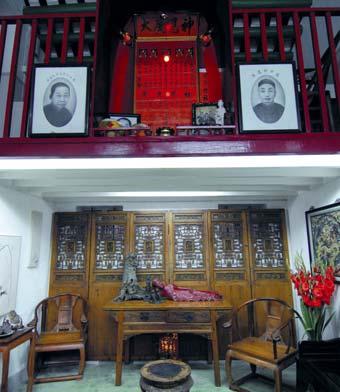
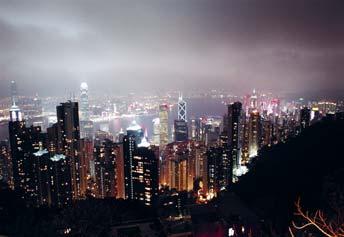
hundreds of plaques honouring deceased individuals. These memorials are paid for by relatives and close friends.
We then headed down to the Po Lin Monastery, which lies in the shadow of the Buddha, to have a simple but satisfying vegetarian meal prepared by the monks. Village Theme Park
The perfect return route from the Po Lin Monastery is to take a stroll through the nearby Ngong Ping Cultural Village, a sort of Chinese version of a North American theme park. After visiting its moving 'Walking with Buddha' pavilion we headed for the terminus of the Ngong Ping 360.
Sky-High Ride
The Ngong Ping 360 is a spectacular 5.7km (3.5 miles), 25-minute ride that crosses Tung Chung Bay and touches on the Hong Kong airport island before heading towards North Lantau where we boarded one of its cars for our return trip from Po Lin Monastery.
Date at Harbour City
During our early supper at Harbour City, located in the Tsim Sha Tsui waterside district of Kowloon, excitement definitely was in the air as this was the night of the extraordinary annually held Lunar New Year Fireworks Display over Hong Kong's Victoria Harbour!
Harbour City is an immense commercial complex that was built on the former site of wharfs and dockside warehouses.
Fierce Temple God
After the Wong Tai Sin Temple, where I had my fortune read, the Che Kung Temple is definitely Hong Kong's second most popular shrine.
We visited this renowned Buddhist temple, located in the Sha Tin District of the New Territories, on the third day of Chinese New Year, which is the birthday of the shrine's demigod Che Kung.
He was a fierce general from the Sung Dynasty (960-1279 AD) who was elevated to Buddhist immortality on account of his heroic deeds. His much-venerated towering bronze statue, which stands several metres tall in the main hall of the temple, is indeed an awesome sight to behold!
Che Kung is considered by many to be Hong Kong's undisputed god of gambling and as such, thousands of worshipers gather here on his birthday to pray to him for good fortune in the coming year.
Winds of Change
Incense sticks and huge arrays of colourful paper windmills were for sale just outside the temple walls. Apparently, paper windmills purchased at the temple blow good luck winds into your home throughout the year when placed in a window or doorway.
As the day wore on, it was amusing to see the discount signs for the windmills go up. But on a more serious note, I was once again totally astounded by the fervour of both young and old devotees of this impressive and obviously highly revered place of worship.
Proud Heritage
I wish I could say that my quest to find my Chinese roots ended in the historic heritage village of Ping Shan. It didn't, but this was as close as it got. My mum's maiden name was 'Cheong' but it could just as well been 'Tang' when I alighted in the village of Ping Shan.
Ping Shan has one of the longest recorded histories in all of Hong Kong and the lineage of the Tang clan is firmly rooted right here. Considered one of the "Five Great Clans" in the New Territories, the Tang clan can amazingly trace its roots as far back as the twelfth century. High Threshold
On entering his beautifully restored multi-storied ancestral village residence, an amusing anecdote was created by us having to step over the rather high threshold of the entranceway.
Our guide Andy had previously told me that the reason for the high thresholds in village homes was to keep out the chickens and other village livestock! Now I learnt that the real reason was to remind visitors that they were entering a place that should be treated with reverence.
Timeless Pagoda
After touring the two levels of the fascinating Kun Ting Study Hall, which was built in 1870 by Tang Heung Chuen, a 22nd-generation ancestor of the Tang clan, for students preparing for the imperial civil service examination, we strolled over to the site of Hong Kong's only truly ancient pagoda.
The original five-storey Tsui Sing Lau Pagoda, which means "Pagoda of Gathering Stars", was built by Tang Yin-tung, a seventh generation ancestor of the clan, more than 600 years ago! It was damaged by strong winds and subsequently rebuilt as today's still impressive threestorey pagoda.
Living Memories
The really fascinating part of the Ping Shan Heritage Trail was visiting the recently established hilltop Tang Clan Gallery, which is housed in the Old Ping Shan Police Station built in 1899 by the British.
Happily, in 2007, the defunct colonial-styled police station was wonderfully restored and became the repository for many of the Tang Clan's treasured artefacts from its long line of notable ancestors. The gallery even includes a case displaying the historic outfit worn by our charming 'clan guide' Kwai Man on her own wedding day. How I wish I could have found such a remarkable tribute to the Cheong Clan! Kung Hei Fat Choy!
For those not familiar with that greeting, it's Happy New Year in Chinese. And what a happy time it was to be in Hong Kong to celebrate the beginning of the Year of the Ox and to re-establish my Chinese connection!
As I stood on one of the breathtaking lookout points on Victoria Peak, high above Hong Kong's forest of futuristic skyscrapers and its shimmering harbour on my last night in this scintillating city, I began the understand for the first time the contradictions inherent in my late Chinese grandfather Ol' Cheong. After all, he was Chinese yet Western - every bit like contrary yet totally loveable Hong Kong!

